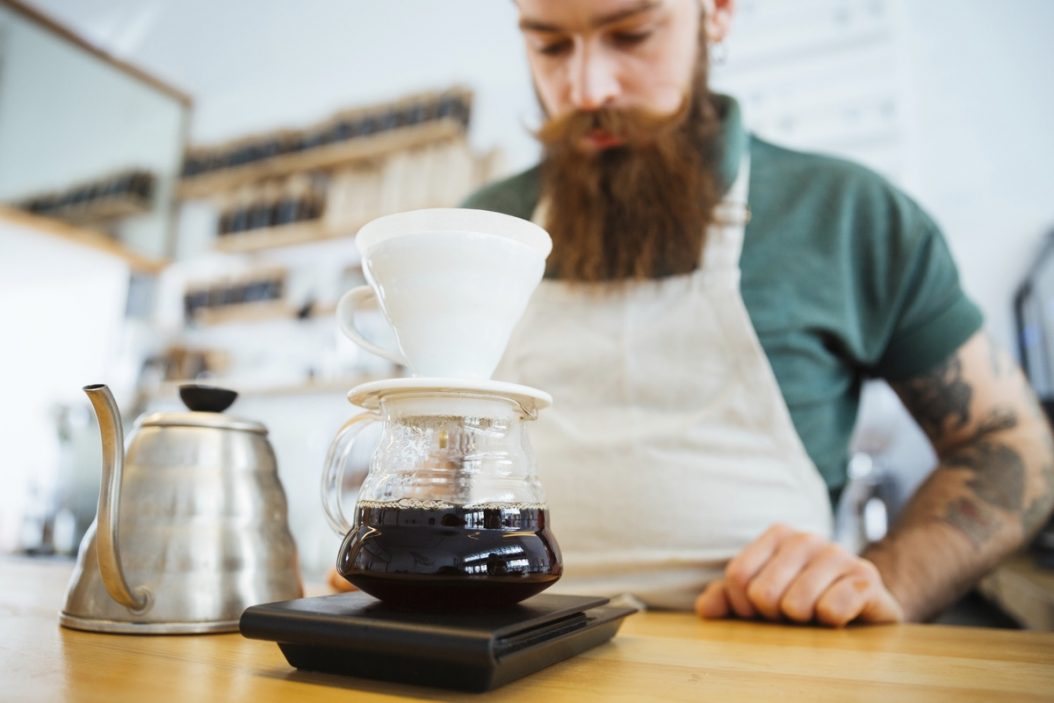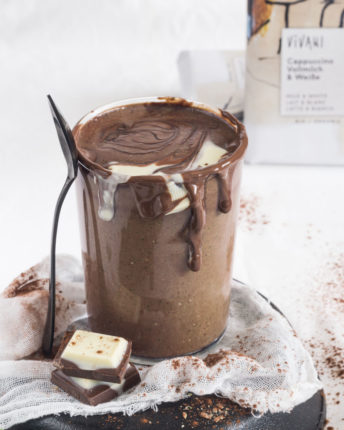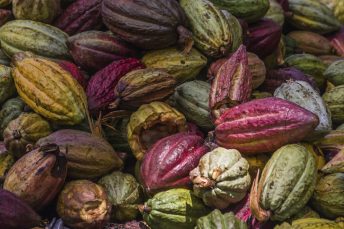Coffee & chocolate: from luxury foodstuffs to mass products
From Bean to Bean – Part 2
Text:
Katharina Kuhlmann
Photography:
istock DeanDrobot, Stephen Wells
8 January 2019

In the first part of our “From Bean to Bean” month-long feature, we looked at the similarities and differences between coffee and chocolate, including their cultivation, production and the finished product. Today we will take a closer look at gourmet coffee and chocolate on the one hand, and on thoughtless consumption on the other. What impact has mass consumption on the environment? How can concepts like organic and Fairtrade help to combat the problems? The third part of this special feature will be devoted to coffee and will include historical facts & figures and anecdotes about the black cult drink.
In the world of chocolate, we have chocolatiers; in the coffee universe, it is baristas. Generally speaking, you can argue that both chocolatiers and baristas use a certain amount of artistic flair to create their luxury product, are experts with lots of experience in their field, and are truly passionate about their work. But there is a great difference in the level of training required for the two professions – or, should we say “vocations”? While the barista needs to expand his knowledge with courses, seminars etc., the chocolatier is a confectioner focusing on chocolate, practising a state-accredited skilled occupation (in Germany at least).
In addition to the level of education, there is a further important difference for coffee: two experts work hand-in-hand in the field, namely the roaster and the barista. While the barista is responsible for presenting the coffee in the cup in an artistic and flavoursome way, the roaster deals with the raw material coffee and uses his powers of wizardry to reveal the finest flavour nuances in the beans.
Coffee & chocolate – problematic mass cultivation is endangering the environment
The gourmet scene is just one side of the coin. The other represents a mass of consumers, who have little or no interest in the origin, cultivation and production conditions behind their cup of coffee or bar of chocolate. For them, the price is all that matters. But when you look at the devastating environmental consequences of mass coffee and cocoa cultivation for example, it can really ruin the appetite. As both plants produce small yields in relation to their size (cocoa max. 2,000 g cocoa beans per year; coffee 500 to 1,000 g raw coffee per year), they demand huge areas for cultivation. Following ruthless slash-and-burn deforestation, they are planted in controversial mass monoculture plantations. These plantations displace animal species, leach the soil and guzzle vast quantities of artificial fertiliser and, above all, water. After all, cocoa and coffee must not be exposed to too much sun. In the wild, they naturally grow in the shade of large trees. On the plantations, they are subjected to relentless tropical sunlight and, as such, need to be watered heavily to prevent them from wilting and dying. The so-called virtual water consumption of one kilogram of roasted coffee is around 21,000 litres of water; it is an unbelievable 27,000 litres of water for one kilogram of cocoa beans. In other words: it takes 140 litres of water to produce 7g of powder for one cup of coffee!
What can we do about it? The solution is simple, but it is too expensive for many consumers: only buy certified sustainable organic products. After all, they are produced using natural cultivation methods, such as those using mixed crops and agroforestry systems. Shade plants make watering unnecessary, and the flora and fauna can co-exist with the cultivation by small-scale farmers. If fertilisers are used, they are handled with care and only natural substances are applied, such as guano.
Organic is good – what about fair trade?
Unfortunately, environmental problems are not the only negative result of intensive coffee cultivation on large plantations. There is another sad consequence that is also known to take place in cocoa cultivation: child labour. There are mainly African countries like Kenya and Tanzania that are affected, but it is also known to take place in shocking levels in Central American countries like Guatemala and Honduras. In many countries, around half of the workers on coffee plantations are children. As harvesting is often tedious manual work, children are regularly used, so their meagre wage can improve the income of their desperately poor families. But children are also used for transportation and fertilisation, which can include handling pesticides – a job that can have a devastating impact on their health.
As with cocoa, production under fair-trade conditions can help. The Fairtrade mark is well-known for ensuring that small-scale farmers receive a fair wage; but it also incorporates developmental aspects. Establishing democratic communities, education and ecological farming are all part of the parcel, including many other issues. But in recent years, there have been more and more critics of fair trade, claiming that it is not transparent enough. There are different fair-trade labels in use, and they all have different criteria. Some people claim that fair-trade coffee is an extremely ineffective way of combating poverty. Other studies prove that the opposite is in fact true. It is a huge debate and one that we don’t want to get into here. The fact is, there is already a counter-model to fair trade – it is known as direct trade. With direct trade, the coffee roaster doesn’t trade with a coffee co-operative, but rather directly with the farmer. The roaster generally looks at the local production conditions and decides whether the quality is good enough. Direct trade gives farmers a direct trading relationship and, thus, more revenue. For roasters, the benefits are obvious: they can guarantee the finest quality coffee by implementing their own quality controls. Under regular fair-trade conditions, the quality of the coffee can vary massively.
Capsules and other issues – improving coffee’s environmental footprint
Labels like the Fairtrade mark and the direct trade concept demand fairness, quality and environmental protection in the producer countries. They also keep large corporations in check and prevent them from gaining even more power. Despite this, large corporations are responding to the changing times and are launching swish innovations to tap into new sales markets. An example: super-fast coffee specialities at the touch of a button thanks to pads or capsules. While pads generally taste terrible and very rarely deliver on their promises, the capsules are like ticking waste bombs. Breaking down the controversial aluminium demands vast amounts of energy and results in 12.3 kilograms of waste per minute from aluminium capsules – it is a real crime against the environment. Environmental activists have come up with a slogan for it: “Rubbish has a name: Nespresso”. And it is the corporations that profit. When you consider the tiny amounts of coffee contained in the capsules, the market leader earns around 60 euros per kilo of coffee. Even cheap brands range between 12 and 20 euros! This is a double scandal, when you consider the extremely average quality of the coffee.
If you want to ensure that your cup has a decent environmental footprint, take note: stay away from capsule machines and other gadgets. Instead, stick with the more traditional methods like filter coffee, French press and espresso pots. And opt for sustainably produced coffee, ideally organic. According to a Swiss study from 2014, the type of cultivation of coffee in the worst case accounts for 70% of the environmental impact of this stimulant. If there was a shift towards sustainability, this value can be reduced to just 1%. As consumers, there is a lot that we can do to initiate and contribute to vital processes for positive change in the production of coffee.
Verwandte Artikel
The Chocolate Journal







